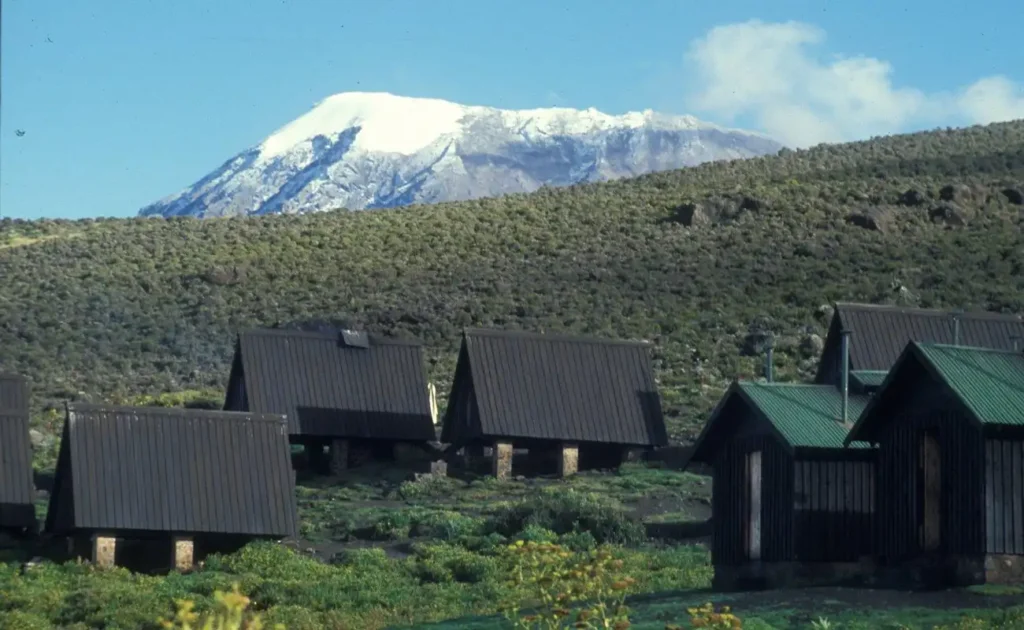As the lesser-known neighbor of Mount Kilimanjaro, Mount Meru offers a challenging climb with a surprisingly lower footfall. Known for its diverse ecosystems, the mountain provides a wide array of experiences for climbers, from thick forests to blissful moorlands. An insider’s tip reveals that understanding the seasonal nuances can vastly enhance the climbing experience.
Traditionally, the best time to climb Mount Meru is during the dry seasons, from June to October, and again from December to February. These periods offer clearer skies and safer trekking conditions, steering climbers away from the slippery paths of the rainy months. Statistically, these months not only promise optimal weather but also increase your chances of encountering the stunning sunrise as it casts its golden hue upon Kilimanjaro in the distance.

What’s the best time of year to climb Mount Meru?
Choosing the right time to climb Mount Meru can make a big difference in your experience. Most climbers prefer the dry seasons, which are from June to October and December to February. During these months, you can enjoy clear views and less slippery paths. The weather is also more predictable, reducing the risks of sudden storms. This makes these months popular among both new and experienced hikers.
Weather in the rainy seasons, which covers March to May and November, can be quite challenging. Trails can become muddy and slippery, making climbs difficult and less enjoyable. Some might find the lush, green landscape beautiful, but it also comes with thicker mist and limited visibility. Moreover, the rain might affect accommodations at the base of the mountain. For those seeking a less busy trail, some light showers might be worth it.
Another essential factor to consider is the temperature. Temperature at Mount Meru can drop below freezing at night, especially at higher altitudes. It is crucial to bring proper clothing, even during dry seasons. Many hikers recommend layering to adjust easily to changing conditions. Ensuring you are adequately prepared will enhance your climbing adventure.
If you’re planning the climb, drawing up a checklist might help. Here’s a simple list of what you might need:
- Layered clothing and waterproof gear
- Sturdy hiking boots
- A headlamp and extra batteries
- High-energy snacks and hydration packs
- Essential camping gear, if staying overnight
A closer look at the two dry seasons
The two dry seasons in Tanzania, from June to October and December to February, are ideal for climbing Mount Meru. The weather is mostly sunny and clear, offering breathtaking views of the landscape. Temperatures are generally comfortable, especially at the base of the mountain. This favorable weather makes it easier for climbers to navigate trails. With clear skies, spotting wildlife along the way is more enjoyable.
June to October is often considered the colder dry season. Although it is cooler, this time of year offers spectacular views of lush greenery. Wildlife is more active, gathering near water sources. The days are usually crisp and refreshing. Many hikers prefer the cooler temperatures, making it a popular season.
December to February, on the other hand, is warmer and drier. The temperatures are slightly milder, creating a comfortable climbing experience. During this period, there’s a festive buzz as travelers flock to the region. The trails are typically less muddy compared to the other months. It’s a great time for those seeking to avoid the peak tourist influx.
When preparing to climb during these seasons, planning is key. Here’s a table summarizing some vital aspects for both seasons:
| Aspect | June – October | December – February |
|---|---|---|
| Climatic Condition | Cooler and crisp | Warmer and dry |
| Trail Condition | Mostly clear | Very stable |
| Wildlife Viewing | High activity | Moderate activity |
Understanding the impact of weather changes on your climb
Mount Meru is significantly affected by weather changes, which can impact your climb. The rainy seasons bring heavy downpours from March to May and in November. These rains create slippery trails, making the climb more challenging. Additionally, rain can reduce visibility, making it harder to enjoy the scenery. Climbers need to be extra cautious to avoid accidents during these months.
In contrast, the dry seasons of June to October and December to February offer more stable conditions. During these months, climbers can expect clear skies and minimal rain. This stability allows for better planning and preparation. Moreover, dry trails are easier to navigate and safer, reducing the risk of slips and falls. It’s an excellent time for those who prefer consistent weather.
Understanding the climate helps in packing the right gear. Inconsistent weather changes require climbers to be prepared for sudden rain even during dry seasons. Packing essentials include waterproof clothing and sturdy boots. Here’s a list of helpful items to bring:
- Rain jacket and pants
- Waterproof backpack cover
- Extra socks
- Trekking poles
- Portable weather radio
Temperature variations are another factor to consider. At higher altitudes, it can get very cold, especially at night. Ensuring you have proper insulation gear is vital. Layered clothing helps to adjust to temperature changes efficiently. Remember, good preparation can turn a difficult climb into a memorable adventure.
Checklist for a successful Mount Meru climb
Planning a Mount Meru climb requires diligent preparation. One of the first steps is to ensure you have the right permits. Obtaining these in advance prevents last-minute hassles. Check with local authorities or tour operators for the latest regulations. Being prepared is essential for a smooth start.
Next, focus on your climbing gear. A sturdy pair of hiking boots is crucial for navigating Mount Meru’s trails. Comfortable, layered clothing can help you adjust to varying temperatures. Season-specific items like rain gear are also a must for unpredictable weather. Don’t forget a reliable backpack for all your essentials.
Physical fitness plays a key role in your climbing experience. Training beforehand can increase your stamina and endurance. Consider exercises that build leg strength and cardiovascular health. Incorporate hiking on different terrains to simulate the climb. Even a little preparation can make a big difference.
Acclimatization is important, especially when climbing to high altitudes. Spend a day or two at the base to acclimate your body. This helps reduce the risk of altitude sickness. Stay hydrated and eat energy-rich foods to maintain your strength. Listening to your body’s signals can prevent serious issues.
Being self-sufficient is equally important. Here’s a list of key items to keep with you:
- Map and compass
- Personal medication and first-aid kit
- Sunscreen and sunglasses
- Portable water purifier
- Trail snacks like nuts and energy bars
Lastly, be mindful of wildlife and their habitats. Mount Meru is rich in biodiversity, and respecting it is crucial. Always follow designated paths to minimize disruption. Keeping a safe distance from animals is advised for both your safety and theirs. Embracing nature responsibly ensures a more enjoyable climb for everyone.
Key Takeaways
- Climbing Mount Meru is best during the dry seasons for safety and views.
- Weather greatly impacts trail conditions, making preparation key for a safe climb.
- Proper clothing, gear, and permits ensure a smooth and enjoyable adventure.
- Physical fitness and acclimatization are crucial to handle high altitudes effectively.
- Respect nature by staying on paths and maintaining distance from wildlife.
Conclusion
Climbing Mount Meru offers an unparalleled experience for adventurers seeking both challenge and beauty. Choosing the right season enhances this experience, providing safer trails and clearer views. Preparation, including appropriate gear and physical readiness, is essential for a successful journey.
Understanding weather impacts and respecting the natural environment ensures a memorable and safe climb. By following the guidelines and tips detailed, climbers can look forward to an enriching adventure. Mount Meru is not just a climb; it’s an unforgettable journey through nature’s splendor.



